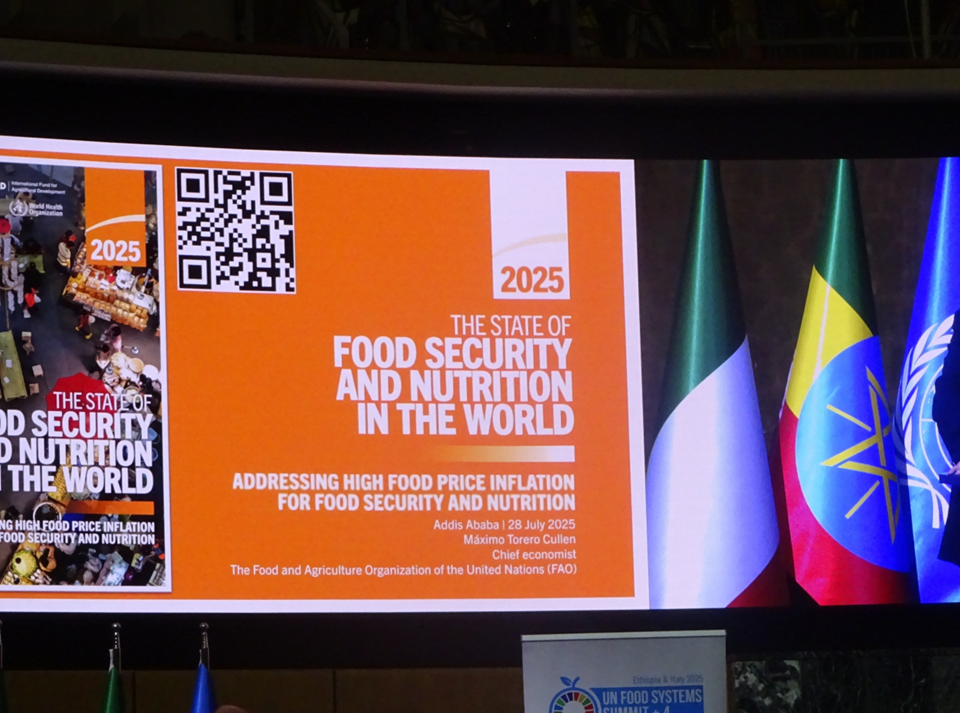Pick Up
1319. Regional Differences in Progress in Achieving SDG2

1319. Regional Differences in Progress in Achieving SDG2
The theme of the report, "The State of Food Security and Nutrition in the World (SOFI 2025)," released in Addis Ababa at the end of July, is "Addressing Rising Food Price Inflation for Food Security and Nutrition." SOFI 2025 analyzes the root causes of recent food price hikes and their impact on global food security and nutrition. In particular, it examines how rising food prices are affecting consumers' disposable income and their ability to access food.
As 2030 approaches, the world is moving further away from achieving Sustainable Development Goal 2 (SDG 2)—to end hunger, achieve food security and improved nutrition, and promote sustainable agriculture. Even before the COVID-19 pandemic, progress had stalled, food security was already showing signs of deterioration, and nutrition indicators had shown little improvement. The pandemic and subsequent food price hikes have further exacerbated these trends. While the latest global estimates show signs of improvement in recent years, global hunger and food insecurity levels remain far higher than they were when the 2030 Agenda for Sustainable Development was announced in 2015.
The proportion of hungry people in the global population is expected to decrease slightly to 8.2%, down from 8.5% in 2023 and 8.7% in 2022. However, of the approximately 2.3 billion people worldwide who will be moderately or severely food insecure in 2024, approximately 673 million will be hungry, with improvements varying across regions.
The global "proportion of people experiencing moderate or severe food insecurity" (a measure of people experiencing constraints on access to adequate food for part of the year) is expected to decrease slightly to 28.0%, or approximately 2.3 billion people, in 2024, from 28.4% in 2023. Nearly half of these people live in Asia, which has the largest population size, but the prevalence of food insecurity is much higher in Africa. The prevalence of moderate or severe food insecurity in Africa is expected to rise from 57.5% in 2023 to 58.9% in 2024, equivalent to an increase of approximately 41 million people. An estimated 893 million people in Africa will be moderately or severely food insecure in 2024, of which 337 million may be severely food insecure.
In Asia, approximately 1.1 billion people are estimated to be moderately or severely food insecure by 2024, of which 418 million (8.7% of the region's population) may be severely food insecure. The region as a whole has seen gradual improvement since 2020, with the prevalence of moderate or severe food insecurity estimated to decrease from 24.3% in 2023 to 23.3% in 2024, equivalent to a one-year decrease of approximately 38 million people. Within the region, South Asia and Western Asia will have the highest prevalence of moderate or severe food insecurity in 2024 (approximately 38% in both), with South Asia experiencing the largest decrease from 2023 to 2024 (approximately 2 percentage points).
Latin America and the Caribbean has shown steady progress since 2021, with the number of people affected by moderate or severe food insecurity likely falling by nearly 9 million in one year, from approximately 176 million to 167 million, and its share of the population estimated to fall from 26.7% in 2023 to 25.2% in 2024. This is primarily driven by progress in South America, where the estimated prevalence of moderate or severe food insecurity fell by about 10 percentage points in 2024 compared to 2021, equivalent to more than 40 million fewer people experiencing food insecurity.
Projections indicate that 512 million people could be chronically undernourished by 2030, of which nearly 60% will be in Africa. One of the key guiding principles of the 2030 Agenda is to "leave no one behind." Adhering to this principle requires understanding, based on evidence about specific populations, whether some groups are more food insecure than others and what policies are needed to address their needs.
(Reference)
FAO, IFAD, UNICEF, WFP, and WHO. 2025. The State of Food Security and Nutrition in the World 2025 – Addressing High Food Price Inflation for Food Security and Nutrition. Rome.
https://doi.org/10.4060/cd6008en
Contributor: IIYAMA Miyuki, Information Program
